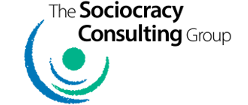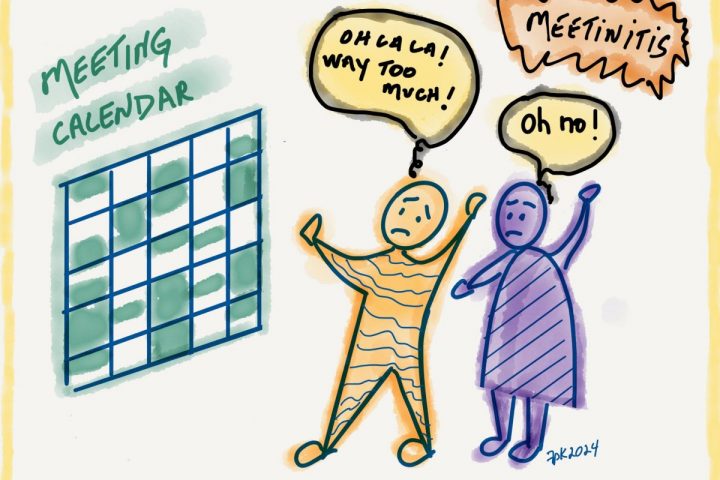The world of business is divided into owners, managers, workers, suppliers, customers and externalities. The story told in business school for the past forty years has been that the job of management is to serve the interests of the owners. The workers are to be controlled or negotiated with by management. Suppliers should be valued (but squeezed) and surrounding communities and the environment are “externalities” – to be ignored or mined for whatever value they can yield. It turns out these are all mistakes. This division is straining our global economy and driving many people out of work, with conflicts spilling over into bad public policy and environmental damage. This division does not need to exist.
Some people try to bridge that division by making everyone an owner, and I am a fan of co-ops, employee stock ownership plans, and the like. I want to share a different strategy with you, though. Let’s focus on the pointy end of ownership: the right to make decisions. You can build the foundation of any thriving organisation using a few simple decision-making tools. I call these tools “Whole Body Consent”. Consent is a foundational principle of Sociocracy, and Whole Body Consent is a means to fully implement that principle.
When we look closely at the fabric of thriving companies, we see webs of interlocking (and high-performing) teams. Recent research by psychologists Marcial Losada, Emily Heaphy and Barbara Frederickson offers a strong predictive mathematical model for how high-performing teams thrive. At the heart of this model are two variables: connectivity and positivity.
When measuring connectivity, researchers are counting the number of times each team member allows herself to be affected by another team member, changing communication style in immediate response to a team mate. In other words, researchers are looking to see how many team members are in close working relationships where they are responsive to and open to learning from one another. Later work by Carmeli & Spreitzer (2009) has shown that connectivity drives learning, personal experience of vitality, productivity and innovation in the organization. Clearly connectivity is essential – and connectivity is itself driven by trust.
The practice of Whole Body Consent should matter to you for three reasons. It produces trust between team members, which is the absolute foundation of high-performing teams and organizations. It provides the team leader or facilitator who uses it with essential information for decision-making. And it makes workers, managers and owners equivalent in policy decisions about the direction of the company, which is vital to preventing one leg of the enterprise from collapsing. Let’s look at how.
The simple core of the Whole Body Consent process is a short series of questions:
- “Do you understand the proposal I’ve just made, or do you have any question about what I mean?”
- “What thoughts or feelings do you have about the proposal?”
- “Do you have any Critical Concerns about the proposal — in other words, will adopting this proposal stop us from accomplishing our Aim or make you unable to contribute to our team?”
The Whole Body Consent process produces trust when team members see that their input is desired, and that if they have a critical concern they will be heard. Over and over I have seen reticent people, even highly professional people with a strong cynical streak, warm up and enthusiastically join in working with the group as it became clear to them that their “no!” would be respected as the useful contribution it genuinely is.
Whole Body Consent provides valuable information when you hear people’s questions, and have a chance to clarify your communication. It provides valuable information when you hear people’s gut response, and their thoughts. It provides essential information when people raise Critical Concerns. No intelligent leader would want to go forward with a proposal if, after understanding it and discussing it, a team member pointed out a way the proposal would likely result in disaster. If the proposal is dangerous, you want to find a creative way to adjust it. If the proposal will cause a team member to be unable to contribute, you want to change the proposal, maybe abandon it – or maybe what you really want is to get rid of the team member, in which case you are best off doing that as directly as you can. In any case, you need the information you get by asking about Critical Concerns.
The Whole Body Consent process keeps the organization intact by making certain that a proposal which would alienate investors, disempower management, or disable workers is never adopted. Such proposals are adopted frequently in many businesses today, and it destroys a tremendous amount of value. Don’t let that continue in your business!
I call it Whole Body Consent, not just consent, because when I ask someone those questions, I watch their body language. When you make your proposal, are they crossing their arms and sticking out their lower jaw? Are they getting very still? Are they suddenly agitated, looking out the window, or perhaps slumped low in their chair and almost asleep? You probably can’t read minds, but you can mention what you see. I suggest that you don’t make any interpretation at all – just ask a question. For example, “When I asked about Critical Concerns, you
pressed your lips together and shook your head. Is there any input we’re missing here? I want to make sure we don’t skip over anything you see. It might be important.”
Often I also notice in myself as a team leader or facilitator that my breathing becomes shallow or stops altogether for a moment when someone else in the group finds a Critical Concern – whether they say it aloud or they don’t. These physical changes happen for people in organizations all the time. By using the Whole Body Consent approach, I can ask people to check whether they are willing to move forward together, and act on the best information available – what they are saying and what their bodies are telling me.
I said my breathing changes when someone raises a concern. Although I know the concern is likely to be important for getting the right business decisions, I still often find myself wishing I didn’t have to deal with it. When I notice that internal resistance, I take three breaths into my belly and change my posture. This helps me let go of my resistance to learning from the new information I just heard. My own willingness to hear and genuinely receive my colleagues’ concerns is a key part of effectively using Whole Body Consent.
A few weeks ago, a colleague of mine realized she had been raising a concern, but not asserting that it was a Critical Concern. In other words, she thought it was mission-critical, but she didn’t want to stop us from moving forward so she didn’t press. In fact, once she acknowledged that her concern was a Critical Concern, we dropped the related product launch and focused on a different product. She had information about the difficulty and time requirements for the product launch which nobody else on the team had. If we continued with the product launch without that information, we might have wasted a lot of time and money!
Contrast this with concerns raised in other organizational contexts, from financial service companies to Chris Argyris’ famous Challenger disaster example. Without the Whole Body Consent tool, organizations repeatedly ignore their best employees right at the moment that they most need to be heard, when they have information which could prevent disaster.
We all agree that a company needs the support and engagement of workers, managers and investors to thrive. But the old model of business mistakenly ignores the voice of people outside the C-suite and Boardroom. If you want to lead a thriving business, use Whole Body Consent. You will have sweaty moments from time to time, as you realize you need to change plans quickly – but your employees and managers will be on the same side as your investors, and the plans you do execute will be much more likely to succeed.



